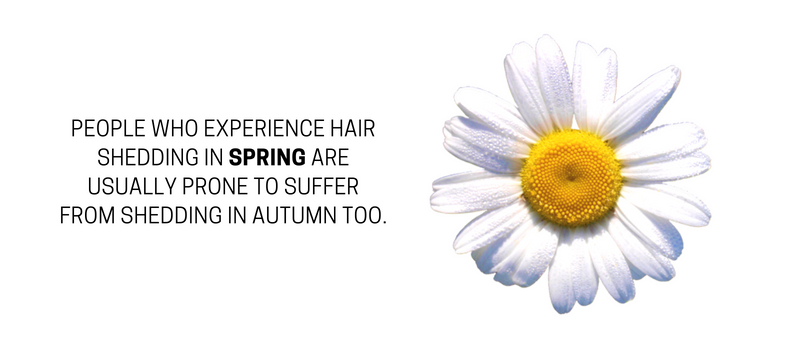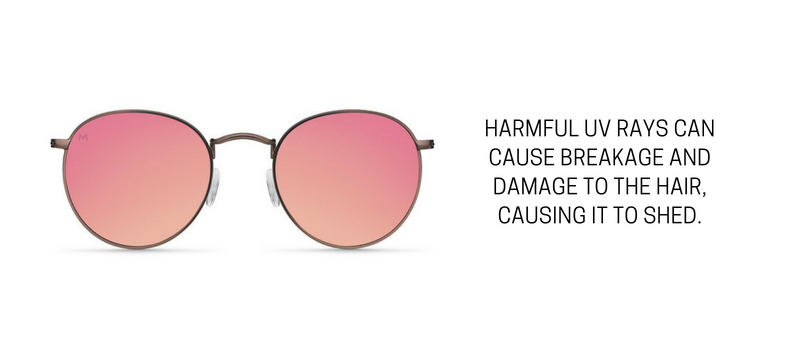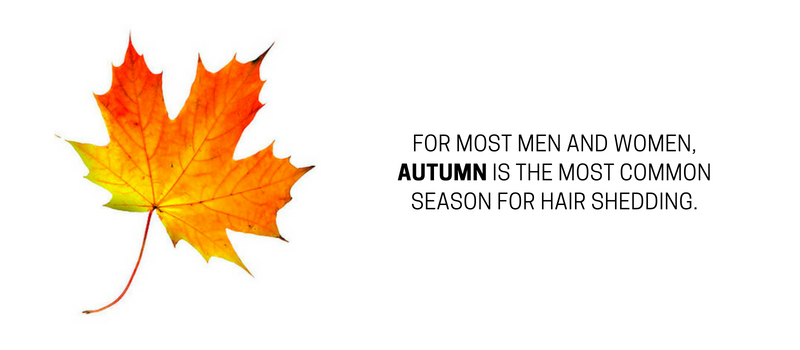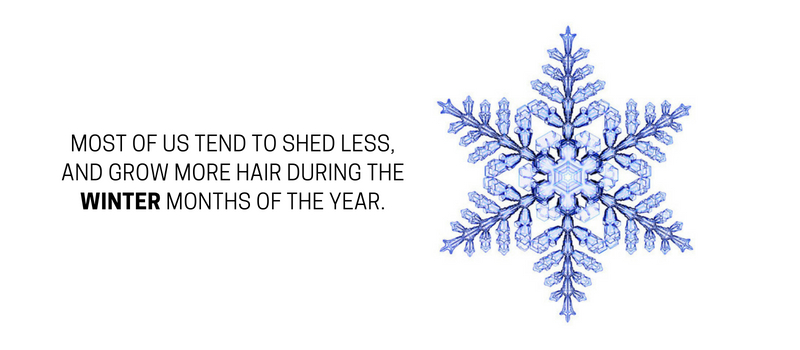What is Seasonal Hair loss?
Many people begin to notice significant hair loss (shedding) in late autumn, particularly in October and November, leading many to believe that hair loss could be seasonal. The shedding of hair during this time of year is usually identified from brushing the hair and also by the number of strands on the pillow each morning.
We shed, on average, between 50 and 100 hairs every day. Hair strands have a life cycle of between 24 and 72 months, during which time it will grow normally. More research is needed to prove that hair loss is indeed seasonal because the reasoning behind seasonal shedding is still largely unclear.
Research has suggested that we tend to shed more hair in the autumn months, and we experience peak hair growth during the spring and early summer time. But another theory suggests that many of us actually experience more hair growth in the winter - A theory based on the same principles as an animal ‘building a new coat’ for the colder months.
What season to we shed the most hair?
As we stated, more scientific research needs to be conducted in order to get the most accurate explanation for seasonal shedding, but going on current research and feedback, here is how the majority of us experience patterns in our hair during the four seasons:
Spring Hair Shedding
Many men and women report relatively strong hair growth during the end of winter and at the beginning of spring. It should be noted that shedding is perfectly normal, and is common amongst all mammals, so you should not worry about it. In most cases, seasonal shedding is not down to male/female pattern baldness – it is more of a natural process that we experience during the change in climate.
If you’re prone to shedding during the spring season, then we can assume you experienced good growth during the winter months. If this is the case then make sure you use less product in your hair (styling products, dry shampoos etc.) over the spring season, and be sure to cut down on harsh conditioners that could potentially harm your hair and cause it to look thin and tired.
Again, do not grow concerned, as after particularly strong growth over the colder months, your hair is simply going through a cycle, which results in losing more strands than usual as the weather changes.

Some people try to tackle shedding by using Minoxidil (an FDA approved hair loss treatment). Minoxidil is known to cause severe shedding during early usage, therefore this may not be the appropriate treatment during a time when you are losing more hair than usual.
If you tend to experience stronger hair growth in the spring, then you are probably likely to be more prone to heavy shedding during the autumn months of the year. Just because you experience good growth during March through to May, that does not mean you should rest on your laurels.
Be sure to keep on top of your hair care routine, with natural vitamins and enhancing shampoos to get the very best out of your hair during its peak season. That way, you will be far better prepared for the dreaded shedding phase.
>
Summer Hair Shedding
Summer can potentially be the most harmful season for our hair. Our hair can suffer severe damage from higher temperatures and constant exposure to harmful UV light. We tend to sweat more in the summer, which is not particularly healthy for the condition of our hair. We also wash our hair more often in the hotter months, which again, isn’t ideal for the health of our strands.

With autumn (peak hair shedding season for most of us) just around the corner, it is absolutely essential that you have a solid, well-drilled hair care routine firmly in place. Vitamins and supplements like HR23+ will give your hair the vital nutrients to help strengthen and protect it from your vigorous daily routine. Also, if you are exposed to the sun throughout the day, we would recommend using hair cream with SPF 30. This will protect your hair from the rays in the same way it protects your skin.
Sunlight also exposes thin hair and bald patches on the scalp, therefore hair thickening shampoos and hair enhancing creams should be considered at the time of the year. Hair building fibres are also popular in the summer – offering excellent concealment of the scalp.
>
Autumn Hair Shedding
As we have already mentioned, the autumn season is, for many of us, the worst time of the year for hair shedding, particularly amongst women. On the bright side, for those who tend to shed more during the fall, it is perfectly natural, and it is highly likely that you will experience the reverse pattern during the winter months.
The drop in temperature from summer to autumn will send your body into a state of transition. The sudden shedding of hair means your body is preparing itself for the even colder months of winter – a bit like the process of animals shedding their coats. It’s not ideal, especially if you already have quite thin hair, but it is a normal process that many of us inevitably go through.

We would always advise you to stay away from harsh chemicals such as Minoxidil (due to its shedding properties), and instead, opt for naturally formulated hair products and conditioners. A safe and potent alternative to Minoxidil is caffeine based shampoos, should you wish to enhance the appearance and strength of your hair.
>
Winter Hair Shedding
For many of us, the winter season is the time to worry less about our hair, as we tend to go through our strongest growth phase, particularly in December. We recognise that the weather is getting considerably colder, therefore we naturally go through a phase of hair growth.
We actually put our hair through more varying temperatures and conditions during winter, due to the cold weather outdoors and the warm temperatures indoors (central heating). We also tend to eat more, not necessarily good foods, and therefore our hair lacks the vital nutrients it needs for the healthiest possible growth.

Winter is the peak season for hair growth, so be sure to eat (and apply) lots of protein to get the very best out of your strands during a time when they are at their strongest.
Every year, January is the month when men and women spend the most money on hair loss treatments. This seems like an odd time of year for hair loss treatments to be so popular, especially when you consider how little we tend to shed in the winter season, but we have out reasons why this trend occurs at the start of every year.
People tend to purchase hair loss treatments and hair care products in January in the knowledge that hair shedding season is only a couple of months away, therefore they are preparing themselves for it.
Either that or because the month of January represents a ‘new beginning’, and in the same way gym memberships go through the roof at this time of the year, many of us just feel the need to tackle a problem head-on after the joys of the festive season.
>
|